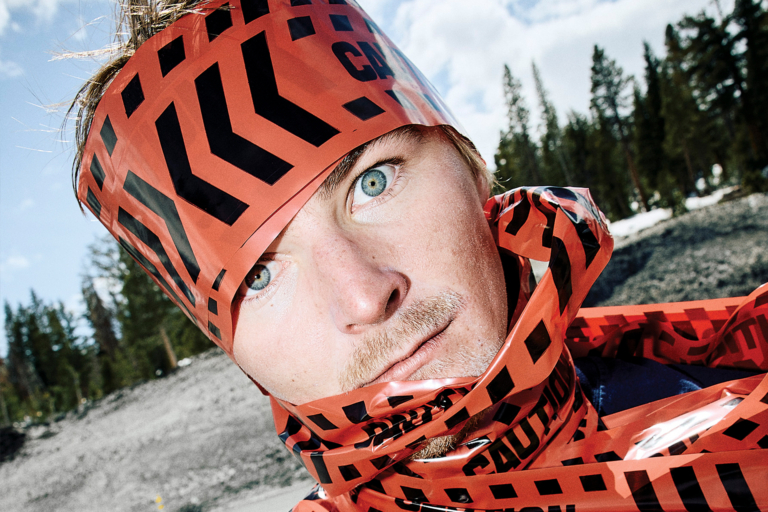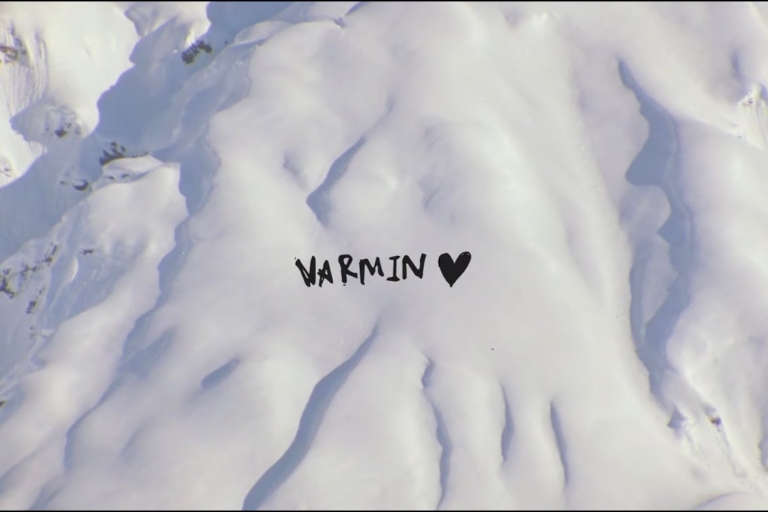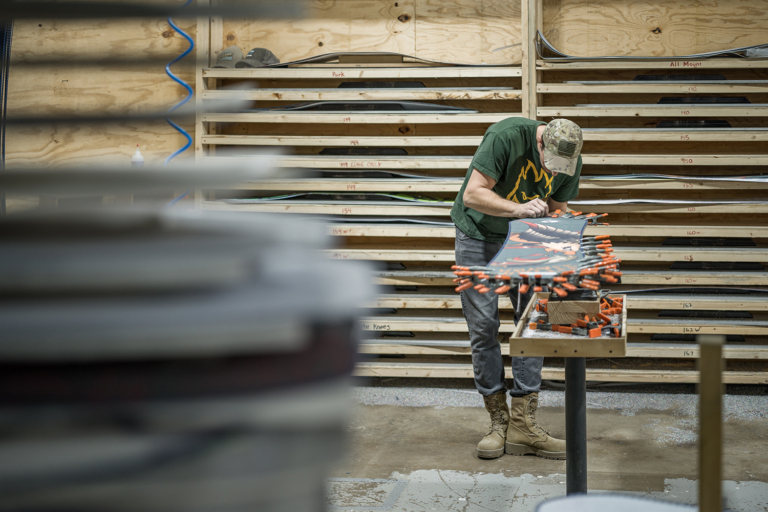Chris Christenson, owner of Christenson Surfboards, has been shaping boards for over 20 years. In the surf industry, there are few that are as highly regarded among everyday riders and professionals alike for the amount of care, precision and spirit he puts into each board that leaves his shaping bay. But Chris is also a born-again snowboarder. Having rediscovered the surf-inspired shapes of Gentemstick‘s Taro Tamai, Christenson spends part of his winter ripping pow by day and shaping by night at his cabin outside of Mammoth Lakes, California and thinks craftsmanship is making a triumphant return in snowboarding. — Jens Heig, Online Editor
Originally featured in Snowboard Mag Volume 11, Issue 1 | The Product Collection
Portrait by Tim Peare
Christenson Surfboards: Owner and Shaper
Home: Cardiff-by-the-Sea, California
Snowboarding since: 1988
SF: Shaping surfboards and snowboarding, what’s the connection there?
I’m kind of a classic example of someone who gets struck by burnout. I grew up in Southern California, did the whole Big Bear thing. I wasn’t there every week, but when the surf went flat and it was sunny at Big Bear we went up there and rode the park. There was a cool scene up there from Bear to Snow Summit in the late ‘90s. Then I got over the snowboard scene and it was more like a weekend here, a weekend there until about 2007-2008. And that’s when I met Taro Tamai, who started Gentemstick. He ordered a surfboard from me. I was going to Japan about three times a year building surfboards, and had heard a lot of buzz about the North Island powder. I had never really experienced snowboarding in powder. He traded me one of his Rocket Fish boards, and when I got there it was just full on bluebird and I got to experience good snow. I was hooked because it was so much like surfing. So I committed to it, and it’s become a passion that’s distracted me from surfing to fill a void in my burnout because I deal with surfers everyday. Snowboarding’s been a good escape from that.
What do you think is the difference in cultures between snowboarding and surfing?
They’re very congruous, especially the big mountain stuff and the big wave stuff. A lot of people know me for building boards for big wave surfers like Greg Long and Mark Healey. I’ve become good friends with Jeremy Jones, and it’s a parallel culture really. It’s equal risk, equal reward. To me the water and the snow are the same thing, it sounds corny, but it really is.

What’s your approach been in surfboard design?
My whole approach with surfboards is from my golf background, I approach it the same way. You can’t use the same club for every shot. So you shouldn’t use the same surfboard every day, or for every wave, or for every type of condition. Some days you need your 7-iron, some days you need your 6’0”. There’s some days you can ride your standard twin tip and there’s some days you should mix it up, ride a pow board, something with a fuller shape to it.
Is that something snowboarding could learn from surfing and is learning right now?
I think snowboarding is doing that on its own right now. Maybe some of these guys who design snowboards are taking that from surfing, but I think they have their own organic path. Just like some of the surfers I’m around, they have so much passion. I’ve been lucky enough to meet many of these high-level snowboarders and they also have so much passion. Where there’s passion, there’s creativity and progression.
Do you think surfboard shaping-style craftsmanship is coming into snowboarding?
Oh yeah, definitely. I think there is a lot of craftsmanship coming into snowboarding. It’s been neat talking to all the designers from different companies. While I’ve been here at the Pow Wow, I’ve talked with the guys from Burton, CAPiTA, RIDE, Gentem — they breathe it, they are into it. It’s cool, it’s inspiring to me.
In your eyes, how have surfboard shapes evolved snowboarding?
There is a debate that snowboarding came from surfing, but I think they’ve all gone their own path. In the late ‘80s early ‘90s you only had one surfboard in your quiver — for waves up to double overhead everyone rode the same board. No one even had more than two surfboards. Then this alternative movement happened, some people called it retro, but I think retro is a regressive word. It’s like pay attention to the past and add something to it to make it more progressive. In the mid ‘90s we started building twin fins again, making wider plan shapes and shortening the boards a ton.
It’s something that I think is happening with snowboards too, where you can say a surfboard is 6’2” or 5’10” and a snowboard is a 158 or a 161, but when you measure it as a volume you can actually shrink a 158 snowboard down to a 142, make it a little wider and it has the same volume. That’s what we are doing with surfboards again. In the early 2000s, around 2002, everyone went from a one-board quiver to six to 10 surfboards in their garage. It looks like snowboarding is starting to move that way too, which is pretty cool.

Can you talk about volume and how it translates?
Yeah, so the big thing now in surfboards is that we are starting to measure volume. We were always hand shaping and I still hand shape a lot, I think it’s important to hand shape, but computers now play a big role in all technologies of snowboarding and surfing. With surfboards now we are measuring things in volume, as in liters. The guys on tour for example, let’s say three years ago, Kelly Slater was probably riding a 6’0” for his daily driver. The guys have brought their board length down three or four inches, which is a lot in surfing, it’s like taking 10cm out of your snowboard. I rode a 144 Gentemstick Rocket Fish and I felt confident on it, it had plenty of drive. The snowboard guys have figured this out. I was just in Baldface and Terje Haakonsen was riding the new Pile Driver shape by Burton, I think it was a 140 and he rode it the whole time and he dug it, had nothing but good things to say about it. You could take any board and shrink it down to a 144, but add some width to it and it’s going to have the same volume. So if you stick it in a tank of water, it’s the same amount of water displaced.
Can you elaborate on that a little more and the advantages of downsizing?
I figured out that 28 liters was the volume that works best for me and my surfboards. So now I have five boards in my quiver and they all come out to 28 liters. That range of surfboards goes from 5’0” to 5’10”. So I’ve got a 5’0” that’s 28 liters, I’ve got a 5’4” that’s 28 liters, a 5’6” that’s 28 liters, a 5’8” and a 5’10”. I think you can do that with your snowboard quiver too and it works. When it comes to paddling they all paddle the same, my 5’0” paddles the same as my 5’10”. They have the same drive. Obviously, when you go shorter you’re going wider and you have a different outline of the surfboard. You just learn how to ride it differently, but in the overall volume of the board you’re not struggling with the paddling and the floatation. The same goes with a snowboard when you get in good snow or hardpack, you’re going to learn how to adjust and it will work. A lot of the snowboards are going to start tweaking their size and their sidecuts.
Watch the other two parts of Surf The Snow: Smartwool and Slash’s Alex Pashley and Flow’s Dale Rehberg
Subscribe to Snowboard Mag here.
Find more information on JH Pow Wow here.
Check out Jackson Hole Mountain Resort here.






